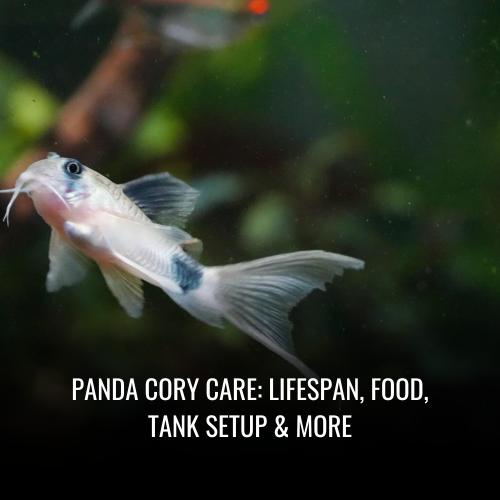One of Climbing Perch’s most distinctive features is the accessory air-breathing organ vital for survival during droughts, which empowers it to breathe air directly and even traverse land. In its native regions, the Climbing Perch is a valued food fish, while elsewhere it is considered an invasive and problematic species.
Capable of adapting their body form and employing a predatory nature, Climbing Perches can bury themselves in mud, enabling them to endure extreme conditions. Their role in local ecosystems is significant as they are a prominent food source, but their hardiness and prolific breeding can also threaten biodiversity when introduced to new environments.
Below is a concise overview of Climbing Perch’s characteristics:
| Scientific name | Anabas testudineus |
|---|---|
| Common name | Climbing Perch |
| Origin | Southeast Asia, Sri Lanka |
| Usual size in tanks | 6-8 inches |
| pH range | 6.5-7.5 |
| Water hardness (dGH) | 5-19 |
| Temperature | 22-28°C (72-82°F) |
| Reproduction | Bubble-nest builder |
| Temperament (own species) | Can be aggressive |
| Temperament (other fish) | Predatory |
| Tank position | Mid-water to bottom |
| Lifespan | Up to 8 years |
| Tank size | Minimum 20 gallons |
| Filtration system | Moderate |
| Sexual dimorphism | Slight |
| Substrate cleaning | Not necessary |
Despite their fascinating survival skills, Climbing Perches are labeled as noxious fish in certain locations due to the ecological risks they pose. Fish Hobbyist Publications, Inc. warns aquarium enthusiasts to consider the implications before choosing this species for their tanks.
Scientific Name
The Climbing Perch is an intriguing fish species scientifically known as Anabas testudineus. Belonging to the family Anabantidae and the diverse order Perciformes, its classification reflects its unique ability to thrive in various water conditions, particularly areas with low oxygen levels.
| Classification Category | Details |
|---|---|
| Kingdom | Animalia |
| Phylum | Chordata |
| Class | Actinopterygii |
| Order | Perciformes |
| Family | Anabantidae |
| Genus | Anabas |
| Species | A. testudineus |
Average Size
Climbing Perch, known for their adaptability to various aquatic environments, typically display lengths ranging from a modest 10 centimeters (4 inches) to a more considerable 25 centimeters (10 inches).
These sizes make them an ideal inhabitant for aquarists who appreciate small to medium-sized freshwater fishes. On rare occasions, Anabas testudineus aficionados may encounter individuals that stretch up to 30 centimeters (12 inches), presenting a larger display of this species.
The weight of climbing perch showcases a broad spectrum, from a lightweight 25 grams to a more robust 150 grams. Factors such as their specific age, dietary habits, and the quality of their habitat contribute to the variation in their mass.
| Size Attributes | Range or Description |
|---|---|
| Typical Adult Length | 10 – 25 cm (4 – 10 in) |
| Recorded Maximum Length | 30 cm (12 in) |
| Juvenile Length in Tanks | 5 cm (2 in) |
| Gender Size Disparity | Females larger than males |
| Average Weight | 25 – 150 grams |
Understanding the average size parameters of climbing perch is essential for both hobbyists and researchers aiding in the provision of appropriate care and habitat management.
Lifespan
Climbing perch boast a respectable lifespan, typically ranging between 5 to 8 years when kept in captivity. This demonstrates their hardiness and denotes that they can be long-term companions for fish hobbyists. The journey from hatchling to adult is marked by significant milestones, including reaching sexual maturity. This pivotal stage in their life cycle occurs when they attain a length of approximately 15 centimeters.
Understanding the lifespan and reproductive habits of Anabas testudineus is valuable for hobbyists who aim to cultivate a healthy and sustainable population in their aquariums or breeding programs.
| Breeding Attributes | Description |
|---|---|
| Lifespan | 5 – 8 years in captivity |
| Sexual Maturity Size | ~15 cm |
| Average Egg Production | 50 – 100 eggs |
| Egg Characteristics | Buoyant, float on water surface |
| Breeding Behavior | Parental guarding of eggs |
Natural Habitat
Climbing Perch, scientifically known as Anabas testudineus, display impressive resilience, flourishing in a multitude of aquatic environments. Their native terrain spans across the verdant landscapes of Southeast Asia and South Asia, including the waters of Sri Lanka. Adept at inhabiting both sluggish-moving streams and stagnant waters, these fish exhibit remarkable adaptability.
This versatility is partly due to their extraordinary tolerance to fluctuating oxygen levels and an ability to withstand a spectrum of temperature conditions, enabling them to persist in environments often deemed inhospitable for many other fish.
| Habitat Types | Characteristics |
|---|---|
| Freshwater | Ponds, Lakes, Swamps |
| Brackish Waters | Estuaries and Mangroves |
| Stagnant or Slow-Moving | Canals, Ditches, Floodplains |
Climbing Perch’s enduring nature secures their presence in a variety of water bodies and underlines their suitability for life in a wide array of ecosystems.
Appearance
The Climbing Perch (Anabas testudineus) is recognizable by its cylindrical body, which smoothly transitions to a tapered caudal peduncle at the end. These fish have a distinctive flattened head, setting them apart from their aquatic counterparts. Nature has painted them in a palette ranging from light brown to dark green, with a canvas of irregular blotches providing natural camouflage.
Adorned with lengthy fins that point skyward, both the dorsal and anal fins of the Climbing Perch present a sharp, elongated silhouette. One of Climbing Perch’s most intriguing features is their labyrinth organ—an accessory air-breathing device that allows them to inhale atmospheric oxygen, a valuable adaptation for survival in waters with scant oxygen levels.
| Feature | Description |
|---|---|
| Body shape | Cylindrical, elongated, flattened head |
| Tail | Tapered caudal peduncle |
| Color | Light brown to dark green with blotches |
| Fins | Long, pointed dorsal and anal fins |
| Breathing organ | Labyrinth organ |
| Juvenile marking | Black spot on pectoral fin base |
| Adult male breeding color | Reddish tinge on fins |
| Eyes | Large and protruding |
| Camouflage patterns | Striped or mottled |
Behavior & Temperament
Climbing Perch (Anabas testudineus), with their notable presence across Southeast Asia and Sri Lanka, bring a dynamic energy to any freshwater or brackish water habitat. They are not your typical placid fish; their behaviors and temperament reveal the complexities of this unique species. The multifaceted nature of Climbing Perch manifests through their predatory instincts, territorial tendencies, and social interactions.
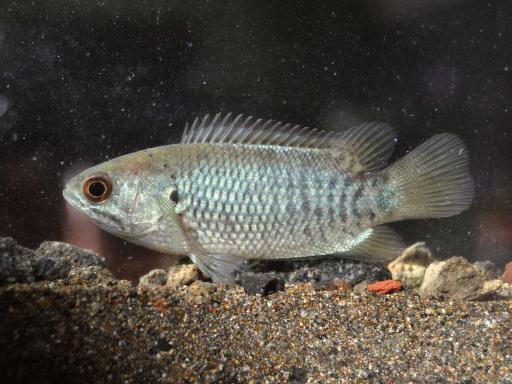
Are Climbing Perch Fin Nippers?
Despite the predatory nature of Climbing Perch, they do not engage in fin-nipping behavior. Their diet primarily consists of live prey such as smaller fish, crustaceans, and insect larvae. In a natural or aquarium setting, there is little evidence to suggest these fish target the fins of other fish. Unlike some species that exhibit fin-nipping as part of territorial or stress-related behaviors, Climbing Perch seem less inclined to damage the fins of their tank mates.
Are Climbing Perch Aggressive To Each Other & Other Fish?
Climbing Perch can display a spectrum of agonistic behaviors, often influenced by environmental conditions and individual characters. They are solitary creatures and, given their predatory inclinations, may intimidate or chase smaller companions. During breeding seasons, males, in particular, exhibit increased territorial aggression. When it comes to interactions with conspecifics, providing ample space and ensuring a well-structured environment with hiding places can help diffuse potential conflicts. In a community setting, careful consideration should be given to avoid housing them with fish that might be considered prey or direct competitors.
Are Climbing Perch Friendly To Each Other & Other Fish?
The word “friendly” may not best describe the interactions between Climbing Perch and their aquatic neighbors. While they aren’t innately sociable with other species, they can coexist peacefully under the right conditions. The key is to respect their need for personal territory and understand their natural instincts. Harmonious cohabitation is possible with appropriate tank management that takes into account each species’ needs and behaviors, despite the general predilection for solitude and dominance that Climbing Perch exhibit.
Are Climbing Perch Schooling Fish?
Climbing Perch do not exhibit schooling behavior like some other fish species. They are rather independent, patrolling their environment with a solitary grace. In their native settings, they tend to keep to themselves, unless coming together briefly for the purposes of reproduction. In captivity, this non-schooling nature should be considered when planning tank communities, as it could affect the overall dynamic of the aquatic ensemble.
Can You Have Just One Climbing Perch In The Tank?
Yes, keeping a single Climbing Perch in a tank can be successful and may even prevent the aggression that could occur in a group setting. A lone Climbing Perch may thrive when provided with an enriched environment that caters to their natural behaviors. Having just one also allows for careful observation and monitoring, making it easier to pinpoint any health or stress-related issues that could arise.
Do Climbing Perchs Need To Be In Groups?
While Climbing Perch can live alone, small groupings are known to stimulate more natural behavior. Keeping them in a group of 3-5 may reduce stress, particularly when the group consists of one male to several females to prevent male-on-male aggression. If opting for group living, be sure the tank is spacious enough to accommodate multiple territories and offer numerous hiding spots to mimic their natural habitat and minimize potential squabbles.
Food & Diet
Climbing Perch, Anabas testudineus, are known for their versatile and opportunistic feeding habits which play a pivotal role in the regulation of their natural habitats across South and Southeast Asia. They require a varied diet to promote optimal health and vitality.
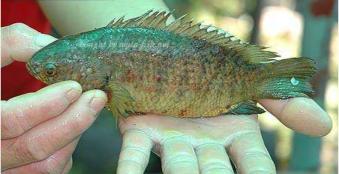
Does Climbing Perch Eat Algae?
Contrary to popular belief, Climbing Perch are primarily carnivorous and do not actively seek algae as a prominent part of their diet. While they are considered omnivorous, their preference leans significantly towards meaty foods rather than vegetative matter like algae. Hence, algae do not constitute a significant portion of their diet either in the wild or in captivity, and they are unlikely to contribute to algae control in an aquarium setting.
Does Climbing Perch Eat Shrimp?
Yes, Climbing Perch can and do eat shrimp. Their natural predatory instincts drive them to feed on a variety of small aquatic organisms including crustaceans such as shrimp. In both their native environment and in captivity, Climbing Perch will readily accept small live or frozen shrimp, showcasing their adaptability and opportunistic nature with regards to their feeding habits.
Do Climbing Perch Eat Bloodworms?
Bloodworms are a favored dietary choice for Climbing Perch, being both nutritious and closely resembling the live prey found in their native habitats. The high protein content of bloodworms makes them an excellent food source, and providing them either live or frozen can greatly contribute to the health, coloration, and activeness of Climbing Perch in captivity.
Does Climbing Perch Eat Mosquito Larvae?
Climbing Perch are effective natural predators of mosquito larvae, which fits comfortably within their diverse diet. They actively hunt and consume mosquito larvae in their natural settings, which aids in the control of mosquito populations. This benefit is particularly important in regions where mosquitoes are vectors for disease, making Climbing Perch a functional asset in managing such aquatic environments.
Do Climbing Perch Eat Planaria?
Planaria, while not a major staple in their diet, can be consumed by Climbing Perch. The presence of these small invertebrates in their habitat serves as an opportunity for Climbing Perch to utilize their natural predatory behaviors. If planaria are present in their environment, either in the wild or within an aquarium, they may become part of the Climbing Perch’s diet.
Do Climbing Perch Eat Plants?
Even though Climbing Perch have a preference for a carnivorous diet, they are known to occasionally consume plant matter. This could include submerged aquatic plants or terrestrial vegetation they encounter at the water’s edge. In captivity, to mimic their natural dietary habits, the inclusion of some plant matter such as blanched lettuce or spinach can be beneficial. However, it is important to recognize that plant matter should only supplement the predominantly meat-based diet required by these fish.
In summary, a well-balanced diet for Climbing Perch should primarily consist of meaty foods supplemented by suitable plant matter to ensure their nutritional needs are comprehensively met. This dietary approach not only reinforces healthy living but also enriches the coloration and natural behavior of these fascinating fish.
Sexing: Male vs Female
Distinguishing male from female Climbing Perch, Anabas testudineus, poses a noteworthy challenge due to the species’ lack of sexual dimorphism. Unlike many fish species where males and females can often be identified by distinct external characteristics such as color differences or fin shapes, Climbing Perch do not exhibit such visible differences. This absence of distinct traits means aquarists and breeders cannot rely on physical appearance for sexing these fish.
As a result, to ascertain the sex of Climbing Perch, enthusiasts often observe behavioral patterns, particularly during breeding seasons when differences may be more pronounced. For a definitive identification, some may turn to more scientific methods such as internal examinations or genetic testing.
Methods to Determine the Sex of Climbing Perch
- Observation of breeding behavior
- Internal examination (by professionals)
- Genetic testing (in specialized facilities)
Recognizing the challenge this poses in breeding programs, accurate sex identification is fundamental for those interested in the propagation and study of Climbing Perch.
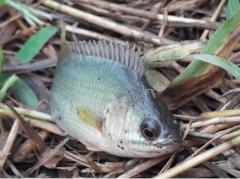
Climbing perch Tank Mates
When creating an aquarium community that includes Climbing Perch (Anabas testudineus), it is essential to select tank mates that complement their peaceful disposition. Suitable companions include other labyrinth fish like Betta fish and Paradise fish, known for their relatively tranquil nature, as long as space and hiding spots are plentiful. Additionally, this ensures each species can carve out its own territory.
Here are some ideal tank companions for Climbing Perch:
| Fish Species | Compatibility Reason |
|---|---|
| Gouramis | Peaceful nature, similar habitat preferences |
| Barbs & Danios | Non-aggressive, active swimmers |
| Corydoras | Bottom dwellers, different niche |
| Bristlenose Plecos | Peaceful, algae eaters, occupy lower levels |
Aquarium Setup
When it comes to providing a healthy environment for Climbing Perch (Anabas testudineus), a meticulously crafted aquarium setup is crucial. This setup requires careful consideration of tank size, water parameters, filtration, and lighting to accommodate the unique requirements of this species. By tailoring the aquarium to meet these needs, Climbing Perch can thrive and exhibit natural behaviors.
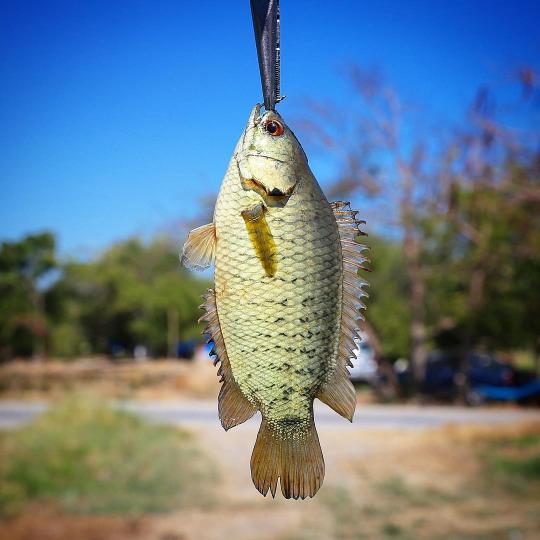
Ideal Tank Size
For a single Climbing Perch, an aquarium with base dimensions of at least 100 cm x 45 cm is recommended. This provides adequate space for swimming and exploration. If you plan on keeping a group, you will need a substantially larger tank to prevent territorial aggression and ensure the well-being of all individuals. The larger the tank, the better it is for maintaining water quality and providing a stable environment, essential for reducing stress and preventing health issues in these fish.
Ideal Water Parameters
Climbing Perch are adaptable fish that can thrive in a temperature range of 15 – 30 °C and prefer moderately hard water, with hardness levels of 36 – 447 ppm. For optimal health, the water should be kept stable without sudden fluctuations which can stress the fish. A well-oxygenated environment with good water movement is also essential, especially in smaller setups. Regular monitoring and water changes are key to preventing harmful substances like ammonia from accumulating.
Filtration
Efficient filtration is vital for Climbing Perch due to their sensitivity to water quality and the waste they produce. A high-quality filter with strong flow will help maintain clear water and proper oxygen levels. The system should encompass mechanical, biological, and chemical filtration components to ensure a clean and healthy environment. Regular maintenance, such as cleaning and replacing filter media, must not be overlooked as it directly impacts the health of Climbing Perch.
Lighting
Climbing Perch are not particularly demanding when it comes to lighting and can adapt to both dim and bright conditions. LED lighting is a preferred choice as it offers energy efficiency and customizable options. Maintaining a consistent light cycle that mirrors natural daylight patterns is beneficial for the fish’s natural behavior and physiology. Care should be taken to avoid stress associated with excessive or irregular lighting, while also considering the needs of live plants, which enhance the tank’s aesthetics and provide a more natural setting for the fish.
Common Possible Diseases & Prevention
Climbing perch (Anabas testudineus) are hardy fish but, like all aquatic species, can contract diseases. Here’s how to safeguard them:
- Ich (White Spot Disease): Regularly check for telltale white spots and keep water conditions stable. Quarantine infected fish immediately to halt the spread.
- Fin Rot & Velvet: Poor water conditions usually lead to these ailments. Maintain cleanliness, carry out frequent water changes, and watch for any discoloration or ragged fins which signal trouble.
- Parasites (Anchor Worm, Gill Flukes): Prevent these by quarantining newcomers and overseeing tank population density. Healthy water flow and filtration are paramount.
- Bacterial Infections: Columnaris and dropsy are bacterial menaces. Ward these off with consistent water quality and a swift response to any fish injuries.
- Fungal Infections (e.g., Saprolegnia): Promote a clean tank environment and remove decaying organic waste promptly. This curbs fungal growth.

Remember, a balanced diet strengthens the climbing perch’s immunity, while a hygienic, well-monitored aquarium is your best defense against these common diseases.
| Disease Type | Prevention |
|---|---|
| Parasitic | Quarantine, Proper Filtration, Tank Space |
| Bacterial | Water Stability, Injury Care |
| Fungal | Cleanliness, Remove Organic Waste |
Breeding Climbing perch In Aquarium
Breeding climbing perch, Anabas testudineus, diverges from that of their gourami cousins. These fish do not construct nests but opt to spawn freely in open water. The spawning ritual is robust, with fertilized eggs, transparent in nature, ascending to the surface.
It’s crucial to relocate the adult perch following spawning due to their predatory nature—adults may snack on their own offspring. Protecting the eggs from the adult fish is paramount for successful breeding.
To support the delicate fry, appropriate feeding practices are essential from the start.
| Lifecycle Stage | Care Required |
|---|---|
| Spawning | Remove adults post-spawning |
| Hatching | Green water or egg yolk feeding |
| Post-hatch | Introduce brine shrimp |
| Disease Prevention | Action |
|---|---|
| Velvet Disease | Monitor and provide specialized care |
Adhering to these guidelines can help ensure the survival of climbing perch offspring in your aquarium.
Are Climbing Perch Easy To Keep?
Climbing perch, scientifically known as Anabas testudineus, are remarkably resilient freshwater fishes and are considered quite easy to keep owing to several unique characteristics. They possess a special accessory air-breathing organ, analogous to a labyrinth, which allows them to endure out of water for extended periods, provided the surroundings are moist. This organ facilitates the survival of climbing perch under conditions where other species might perish due to lack of oxygen.
These fish are well-adapted to a broad spectrum of water parameters. They thrive in both freshwater and brackish waters across regions of Southeast Asia and Sri Lanka, an indication of their versatile capability to adjust to varying tank conditions. Thanks to this adaptability, climbing perch are not only easy to house but also to care for, easing the burden on fish hobbyists.
Are Climbing Perch Sensitive To Water Changes?
Despite their hardy and adaptable nature, climbing perch can be surprisingly sensitive to rapid water parameter changes. Thriving in consistent environments, they may experience stress or illness when exposed to abrupt fluctuations in temperature, pH levels, or salinity. Aquarists need to be mindful of the stability and suitability of the water conditions, as this is important for the well-being of climbing perch.
Abrupt water quality variations, such as spikes in ammonia or nitrite levels, can lead to a compromised immune system and even fatality. To avoid causing undue stress to climbing perch, a gradual acclimatization process is advised when introducing them to new tank conditions, mimicking the brackish and freshwater habitats they originate from in South and Southeast Asia.
Are Climbing perch Sensitive To Ammonia?
Climbing perch display a particular sensitivity to ammonia present in the water, which poses a threat to their intricate respiratory systems. As they depend heavily on surface air-breathing, elevated ammonia levels can result in respiratory distress and can compromise their immune function.
Ammonia is toxic to climbing perch, even at low concentrations, and can cause considerable harm, sometimes leading to fatalities. Chronic exposure to ammonia not only impairs their breathing ability but can also result in ammonia poisoning—which may cause tissue damage and negatively affect the fish’s overall health.
Are Climbing perch Sensitive To Copper?
Climbing perch haven proven to display a vulnerability to copper, which can be detrimental to their health. Copper can infiltrate their environment through various channels, including tap water, fish medications, and algaecides, each posing a considerable risk in captivity.
Even trace amounts of copper can cause adverse behavioral changes and impact the respiratory function of these fish. Therefore, it is crucial for aquarium enthusiasts to routinely check copper levels in the water, using appropriate testing methods and equipment, to maintain a safe environment for these fishes.


